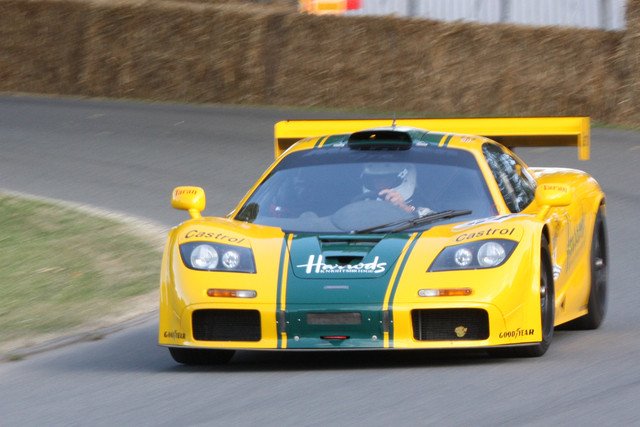For those who’re curious about how a four-time Le Mans winner navigates the circuit, here you go. Andy Wallace is a legend in touring and GT cars, and his silky-smooth style, combined with an analytical approach to driving are what have made him so renowned. He may not have been given the name “Mr. Le Mans” – that title goes to Tom Kristensen – but Wallace won outright on his first attempt, and managed four class wins as well, so it’s fair to assume he knows a thing or two about the 8.4-mile circuit.
The vehicle of choice is the McLaren F1 GTR – a car not too far in specification from the road-going version. Interestingly, it was Wallace who did the top speed testing with that particular car; achieving the incredible 243 mph top speed at Volkswagen’s test track in Ehra-Leissen, Germany. The racing variant was geared much lower, but still managed to hit an incredible 175 mph down the Mulsanne Straight thanks to a slippery shape and the wonderful torque of its sonorous, 6.0-liter V12.
What’s immediately noticeable about Wallace’s driving is that he tends to be very economical with the steering wheel as well as the throttle. Coming out of the pits on cold tires, he still dials in lock slowly and progressively, rather than jerking the wheel left-and-right to build up some tire temperature. This is a dependable indication of someone who has the long-term goal in mind, and by the same token, he seems to accelerate gently, as if he has an eggshell under the right foot.
The wide powerband and immense low-end torque of the BMW S70, an engine so robust it hardly needed any modification for racing, allows for a smooth throttle application, but Wallace is textbook-smooth. No stabs of throttle or countersteering; he tightens the line with an appropriate reduction in throttle and does not slide the car much. His delicate touch is most notable as he negotiates the famous Porsche corners, beginning at 3:21. With plenty of downforce thrusting the tires into the pavement through that series of quick bends, the marbles tend to accumulate just off-line. This means that a mistake there can be costly, and so Wallace drives through the section with a neurosurgeon’s precision; keeping the revs rising slowly but constantly. This measured approach helps the car remain stable while changing direction at those speeds, especially since they ran fairly low downforce at Le Mans to achieve the necessary straight-line speeds.
Throughout the lap, he passes patiently and drives with a margin of safety. This is the ideal way to navigate traffic in a long-distance race, especially when there are a number of classes, drivers of different skill levels, and a considerable amount of fatigue that dims the mind a bit at times. It’s always a matter of mind management here; keeping your calm and not overdriving the car. That takes a certain degree of stern discipline when the car happens to be one of the most thrilling production-based racers in existence, but Wallace probably wasn’t too upset about that.






















